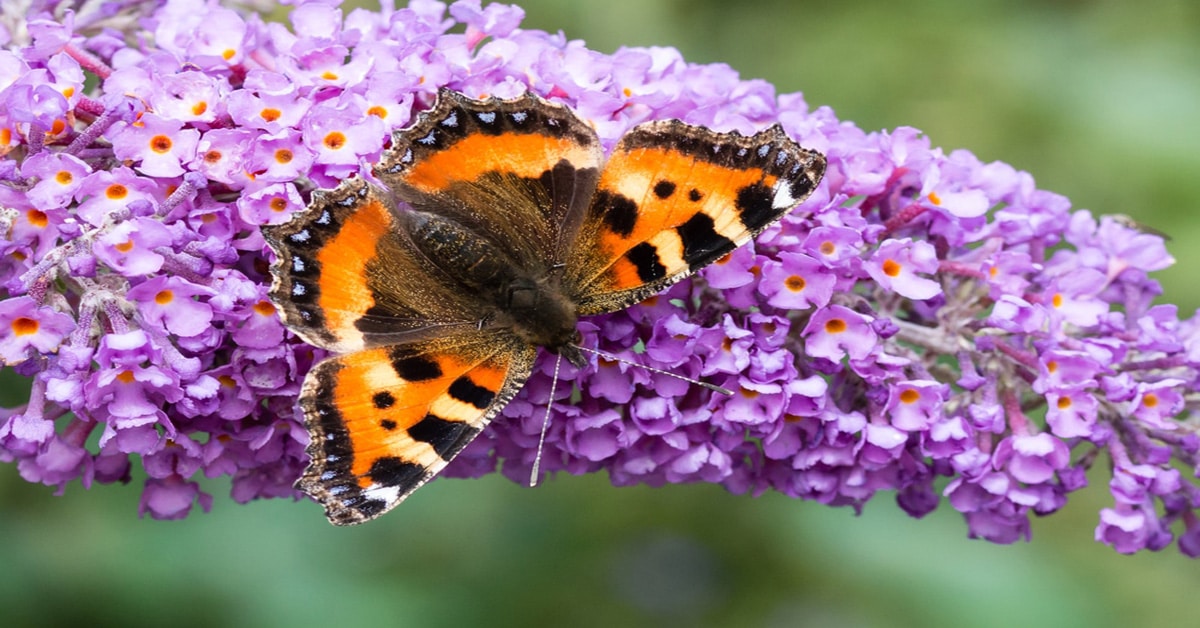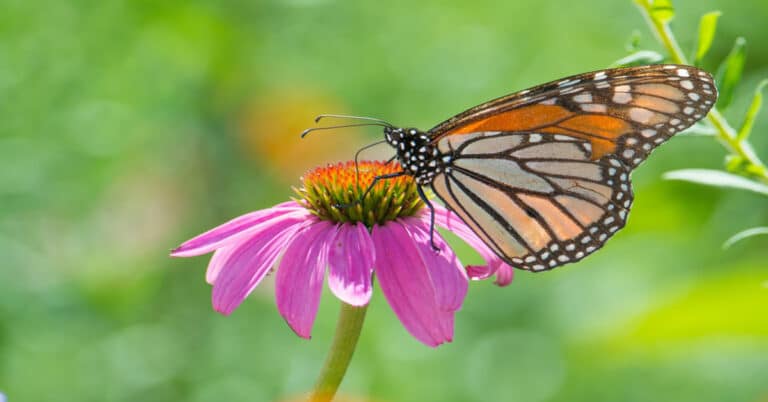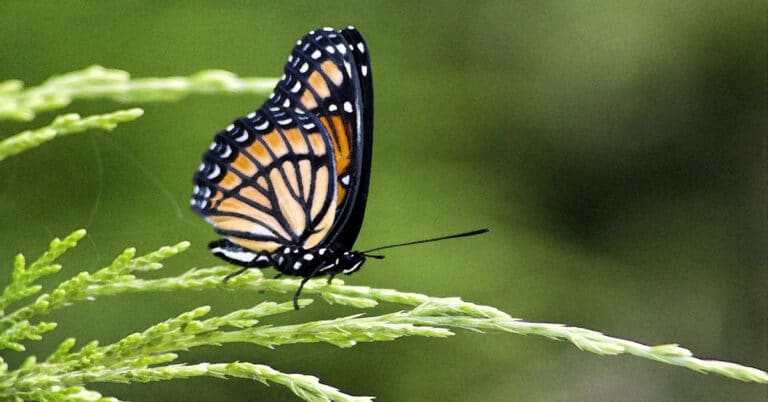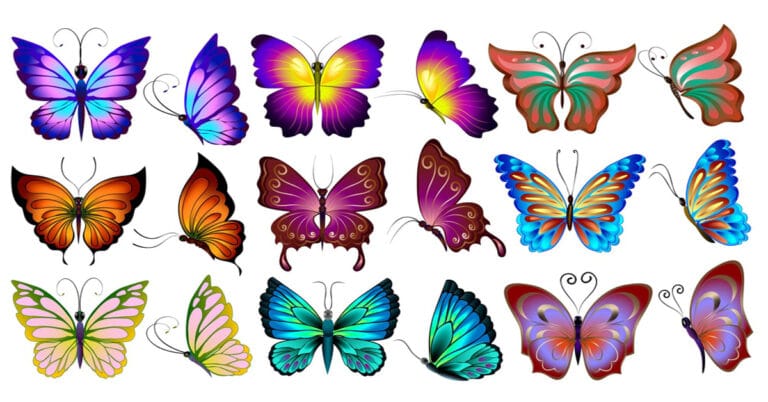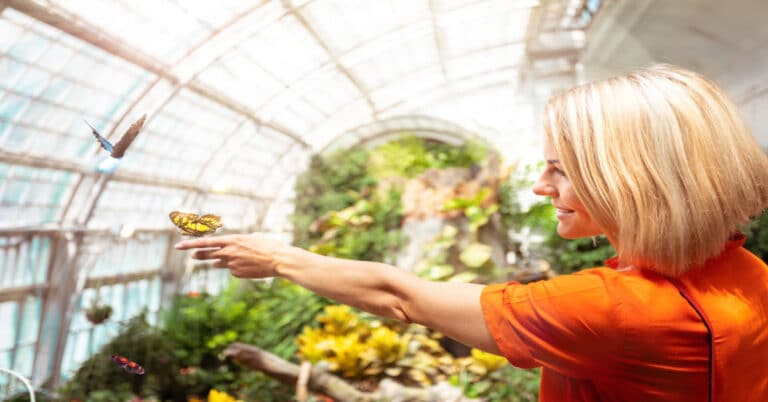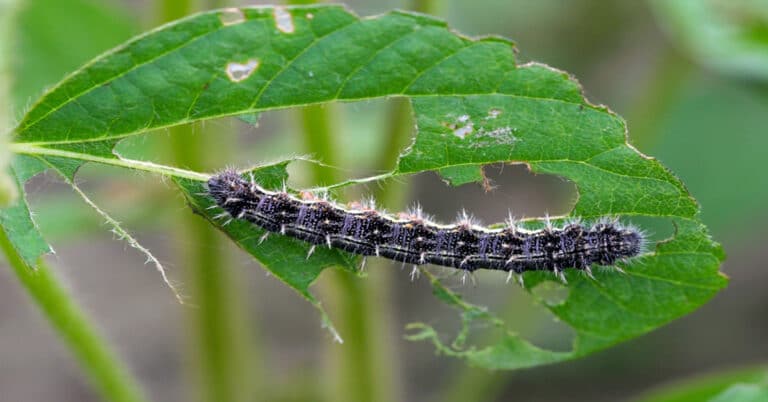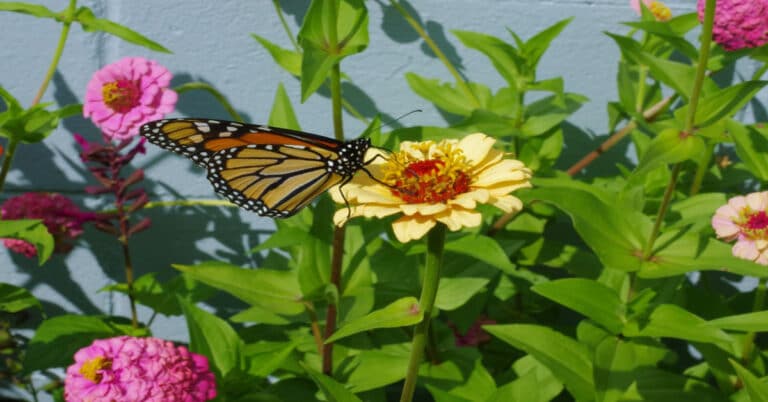Butterfly Bush
Butterfly Bush is a favorite food source of butterflies and has an attractive summer scent. The butterfly bush comes in many colors and can be a great addition to your backyard!
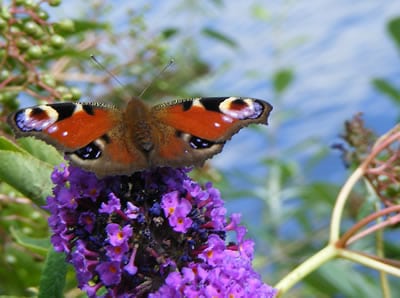
Basic Information
The butterfly bush, scientific name, Buddleia davidii, isn’t actually a bush at all, it is a shrub. So why is it called butterfly bush? Probably because the alterative name is catchier than butterfly shrub. The butterfly bush originated in tropical parts of the China before being brought to other parts of the world. The plant is deciduous and blooms from summer to fall.
Identification
Because butterfly bush comes in many colors, it may not be so easy to identify immediately. Flower colors include: purple, pink, white, yellow, or orange. You may have to look closer, but there is a trait that sands out. A key factor that may help you determine if you are looking at butterfly bush is the fuzzy leaves. As butterflies are attracted to the nectar in the flowers, seeing a butterfly on the shrub may be another clue you’ve found butterfly bush!
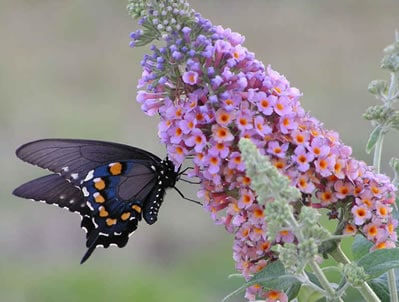
Initial Care
First you need to choose an area that has plenty of sunlight and fertile soil. You may do a soil test ahead of time and determine if you need to add any fertilizers to the area. There are two different time options to plant your new butterfly bush. You may choose to plant in the fall, but make sure you do it well before the first initial frost to allow the plant to get established. If that time does not work for you, you may wait until after the last frost and plant in spring. Either option should work fine.
Next, you want to work your soil. Introduce some mulch and mix it around. Then, dig a hole that is double the size of the root system of the your new plant. Set the plant in the newly dug hole. the top of the roots needs to be ground level. If you plant more than one, they should be spaced 5-10 feet apart. After you are done planting, water well.
Basic Upkeep
This is not a plant that you will have to spend a ton of time tending to if you choose to grow it. Basic care requirements include: picking out the dead flower heads, and pruning before it starts to warm up at the beginning of spring. You may also want to prune your butterfly bush to keep it in your desired shape. We will discuss later on why pruning and deadheading are so important if you are going to have this species of plant.
Butterfly bush will need watered if you are receiving less than 1 inch of rain per week during the summer. Other than that, the only other thing you need to do in the summer is deadhead.
Each spring, add some more mulch to the soil around your butterfly bush. This will help lock moisture in the ground. In colder climates, the mulch will help keep the plant alive during the winter.
Pests and Diseases
There are a few pests that you will need to watch out for including: weevils, moths, and mites. While butterfly bush is resistant to most diseases, you may notice fungal leaf spot. This will present itself as yellow to brown spots on the leaves of the plant. The best way to treat this is just removing the effected leaves.
If the fungal leaf spot had spread aggressively throughout the plant, you have a few options for treatment. The first is pruning, this helps to open up the plant and decrease the humidity that fungi thrives in. If that does not work, you may turn to neem oil. Apply neem oil to the top and the bottom of affected leaves every 7-10 days until you no longer notice the spots.
Invasive Species
Although butterfly bush is pretty and may seem like the perfect plant to add to your flowerbed, there may be a downside to adding in this beautiful shrub. Because it is nonnative, it sometimes can grow out of its bounds. The overgrowth tends to happen in warmer climates. As already mentioned, you need to prune and deadheaded this plant regularly. This general upkeep may help keep it from overgrowing its space and taking over native plants.
Native plants are essential to the survival of wildlife in an ecosystem. You must do your part to contain butterfly bush if you choose to plant it. If you live in a cooler area, butterfly bush will be easier to contain, but again you will need to prune and deadhead it.
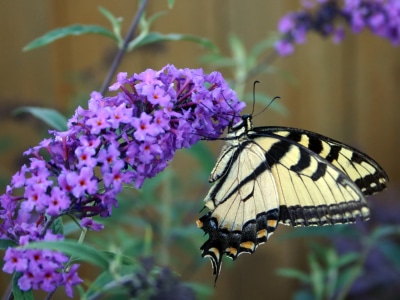
Return to Butterfly Nectar Plants
Noxious Weed
Another potential problem with butterfly bush is that its sweet nectar attracts insects. You may be wondering why that is a problem. The issue is that while attracting insects is great for the survival of this shrub, it takes away pollinators from native plants. You must be responsible if you plant butterfly bush, so it does not turn into a noxious weed!
If you would like to ensure survival of native plants surrounding your butterfly bush, you may plant some around it. These plants include: milkweed, dill and aster.
For a comprehensive list of noxious weeds in the United States, click on this link.
Butterfly Attraction
What does a butterfly come from? A caterpillar! Remember, this is the first stage after hatching that a butterfly will go through. In order for the survival and sustainability of the butterfly species, we need to ensure that caterpillars have a habitat. Caterpillars do not feed on butterfly bush, therefore we need to have other plants available to them if you want to have adult butterflies around to feed on the nectar of the butterfly bush.
So what do caterpillars eat? The same native plants we already discussed planting are great options: milkweed, dill, and aster. Keeping biodiversity in your garden will help your local ecosystem flourish, and will bring more beauty to your yard!

Having discovered a fondness for insects while pursuing her degree in Biology, Randi Jones was quite bugged to know that people usually dismissed these little creatures as “creepy-crawlies”.

